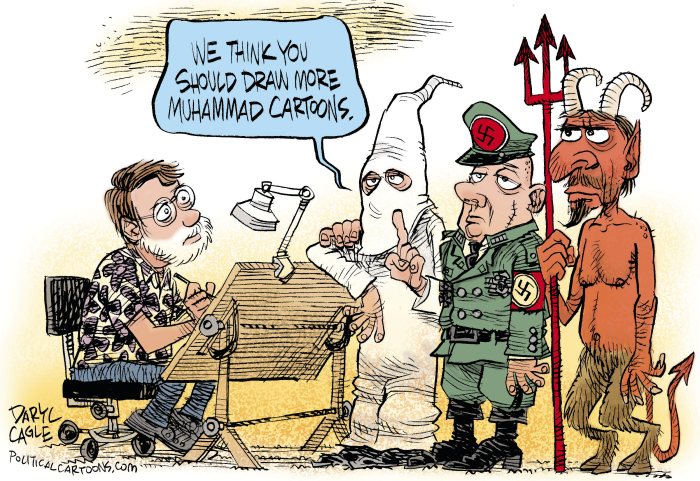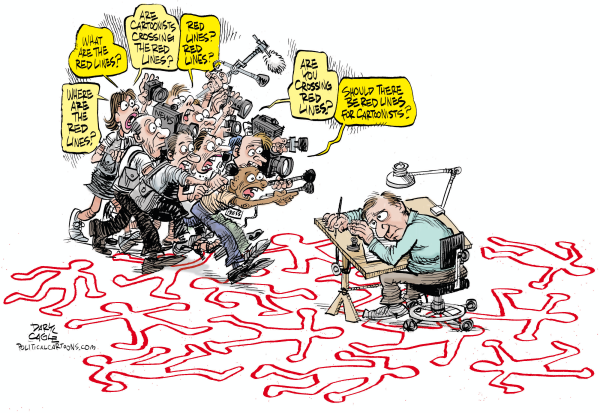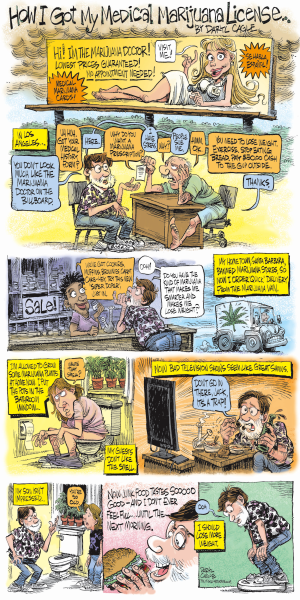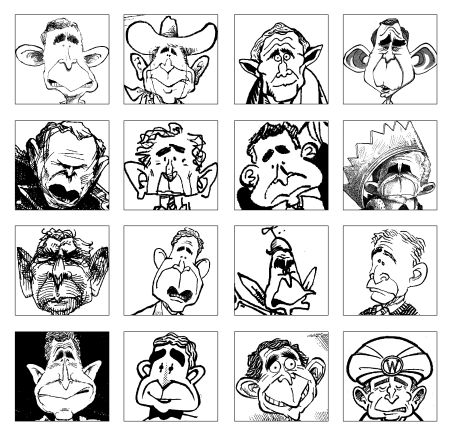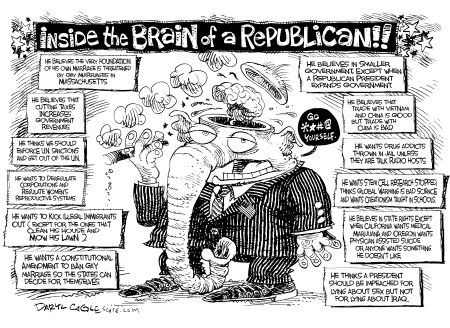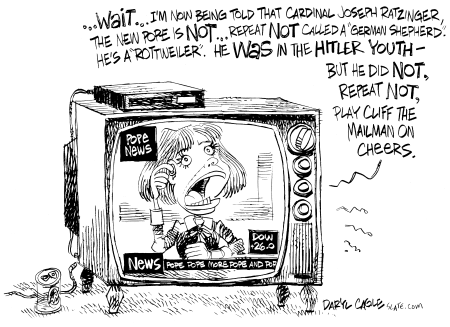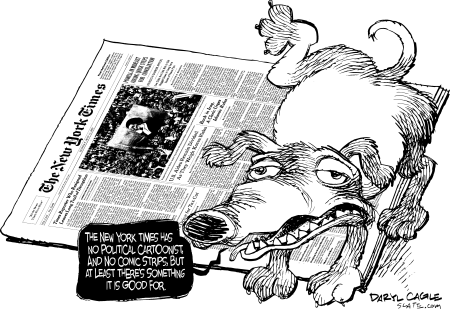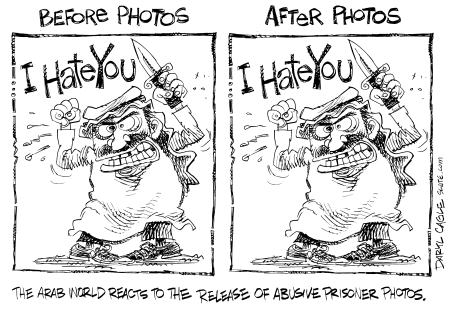
Civil War on the Table
As a political cartoonist I sit around all day watching cable news pundits argue with each other. That’s what all of the political cartoonists do. Our cartoons are nothing more than more screaming voices on the editorial page and our cartoons typically amplify the standard opinions we hear on TV, where pundits offer ready-made opinions on every issue. All I have to do is pick from the tasty opinion smorgasbord that is served up to me, 24 hours a day. The problem is that lately, I’m feeling a bit overstuffed, and the opinions I’m being served aren’t tasting very good.
The ready-made opinions on Iraq come in three flavors:
1. Stay the course and fight the good fight for democracy and freedom (this is what the President and the far-right pundits tell me).
2. Iraq is a big mess, but it would be worse if we left because there would be civil war (this is what most of the pundits tell me).
3. We should get out now (this is what Cindy Sheehan and the far-left pundits tell me).
All of these choices leave a bad taste in my mouth. As a cartoonist, I want a bad guy to bash. The only good cartoons are the ones that bash a bad guy. Most of the cartoonists have chosen to bash President Bush as the bad guy for getting us into Iraq and keeping us there. In my own cartoons I’ve chosen to bash the insurgents in Iraq; they seem like the obvious bad guys to me. The Sunnis hate America. The Sunni insurgents don’t have much success blowing up American soldiers, so they spend most of their time blowing up Shiites; they oppress women, they boycott the elections, they refuse to negotiate on a new constitution. They seem like good, all around, bad guys.
The Shiites are bad guys too. They also hate America, they want an oppressive religious theocracy to rule Iraq, they oppress women, they are aligned with Axis of Evil member, Iran; but at least they negotiate, they vote, they don’t blow things up as much as the Sunnis, and they are the majority in Iraq. I’ll call them: “less-bad guys.” (We like the Kurds, so we’ll ignore them.)
The TV pundits tell me that we must stay in Iraq because if we leave there will be a terrible civil war. All of the options seem dark and gloomy. I wonder why none of the pundits ever discuss the bright side of civil war. I see four arguments for civil war in Iraq:
1. There are a lot more Shiites than Sunnis, so the “less-bad guys” would win.
2. With the Shiites fighting the Sunnis, we (and the Kurds) can sit back and watch until it’s over
3. We’ve learned that the American army is the world’s best at destroying things, but we do a lousy job of building things and keeping peace. We should quit trying to do the things we do poorly.
4. There will be a lot of death, destruction and suffering in a civil war, but many pundits argue that our initial war was so clean and efficient in targeting only the military and sparing the civilian population in Iraq, that the Iraqi people never suffered enough to be willing to make the compromises necessary for peace and democracy. Until they suffer enough to cry, “Uncle Sam,” there is no reason to expect the Sunnis to be civil; they lost their man Saddam and lost their control over Iraq. Of course they would be in a surly mood.
Iraq seems to be having a civil war now anyway, but we’re keeping the heat down by constantly stirring the Iraqi pot. It is a natural American tendency to think that if we stir the pot, the stew will be better; but we could turn up the heat, sit back and let the stew simmer until done. That seems to me to be a recipe that would taste as good as any of the others that are being offered to me, and I’d like to have it served up along with the other dishes on my TV pundit smorgasbord.
Daryl Cagle is the political cartoonist for MSNBC.com. He is a past president of the National Cartoonists Society and his cartoons are syndicated to over eight hundred newspapers, including the paper you are reading. His book, “The Best Political Cartoons of the Year, 2005 Edition,” is available in bookstores now.



